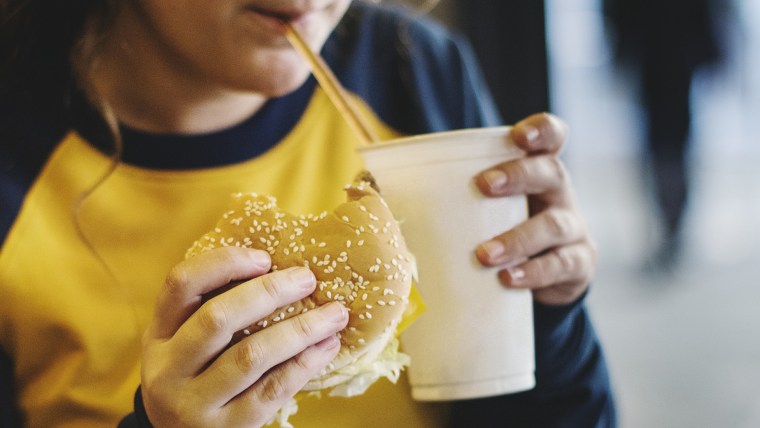Enjoying a meal over a little melodious clamor can be a wonderful part of dining out. But it turns out the volume of that tune may play a role in what we order — and it could be bad for our waistlines.
In a recent study conducted by Dipayan Biswas, PhD, marketing professor at the University of South Florida's Muma College of Business, researchers found that diners made very different food choices based on the music they could hear.

According to the study, published in the Journal of the Academy of Marketing Sciences, volume is proven to impact heart rate and arousal. Naturally, louder music ignites excitement, stimulation and stress while softer sounds have a calming affect. Diners who were exposed to louder noises ordered foods that were significantly higher in calories, while those who were listening to softer music routinely made more health-conscious choices.
"Music has an effect on our physiological system," Biswas told TODAY Food. "You are more likely to start dancing with loud music. [A] higher excitement level translates to choosing unhealthier foods."
To perform the main part of the study, Biswas and his team took over a cafe in Stockholm, Sweden, for several days to conduct their study among hundreds of subjects. As patrons perused menus coded into "healthy," "unhealthy" and "neutral" (like coffee and tea) choices, researchers played the same playlist with a mix of contemporary rock, pop music and classical tunes in a loop for several hours. On some days, they played songs at 55 decibels and on other days they pumped up the jams to 70 decibels.
When Biswas reviewed the cafe sales, he found that 20 percent more customers ordered high-calorie foods when the music volume was high, regardless of what song was playing.
Biswas attributed craving heavier meals to humans' need to seek comfort when overstimulated or stressed. He also noted how this hankering can enable restaurants and supermarkets to manipulate consumer buying behavior. To further test the theory, Biswas did the same type of test at a nearby Swedish grocery store and found shoppers purchased more cookies, chips and red meat when music was played at 70 decibels, but they actually bought more produce when it was played at 50 decibels.
Previous research, like a study conducted by Oxford University's Charles Spence, have demonstrated how things like atmosphere and even heavier cutlery can shift our brains' perception of food, even making it taste better. In contrast to the USF study's sole focus on volume, Spence discovered that listening to pop music like Justin Bieber's "Baby" led to a very unpleasant experience for many diners, whereas listening to Italian opera while eating pizza or pasta on a red-and-white-checked tablecloth heightened the experience.
And these are just some of the "mind games" restaurants play to keep diners satisfied.
In 2012, TODAY reported on how restauranteurs hire architects to engineer and control the sounds in a room to create better sensory experiences. Comal in Berkeley, California, for example, incorporated sound absorbing panels disguised as artwork, as well as microphones and speakers placed strategically throughout the restaurant, to create a "buzzy but conversational" atmosphere.
Despite the many instruments playing into our dining experiences, USF says Biswas' study is the first to detail music volume and its affect on healthy (or unhealthy) eating habits.